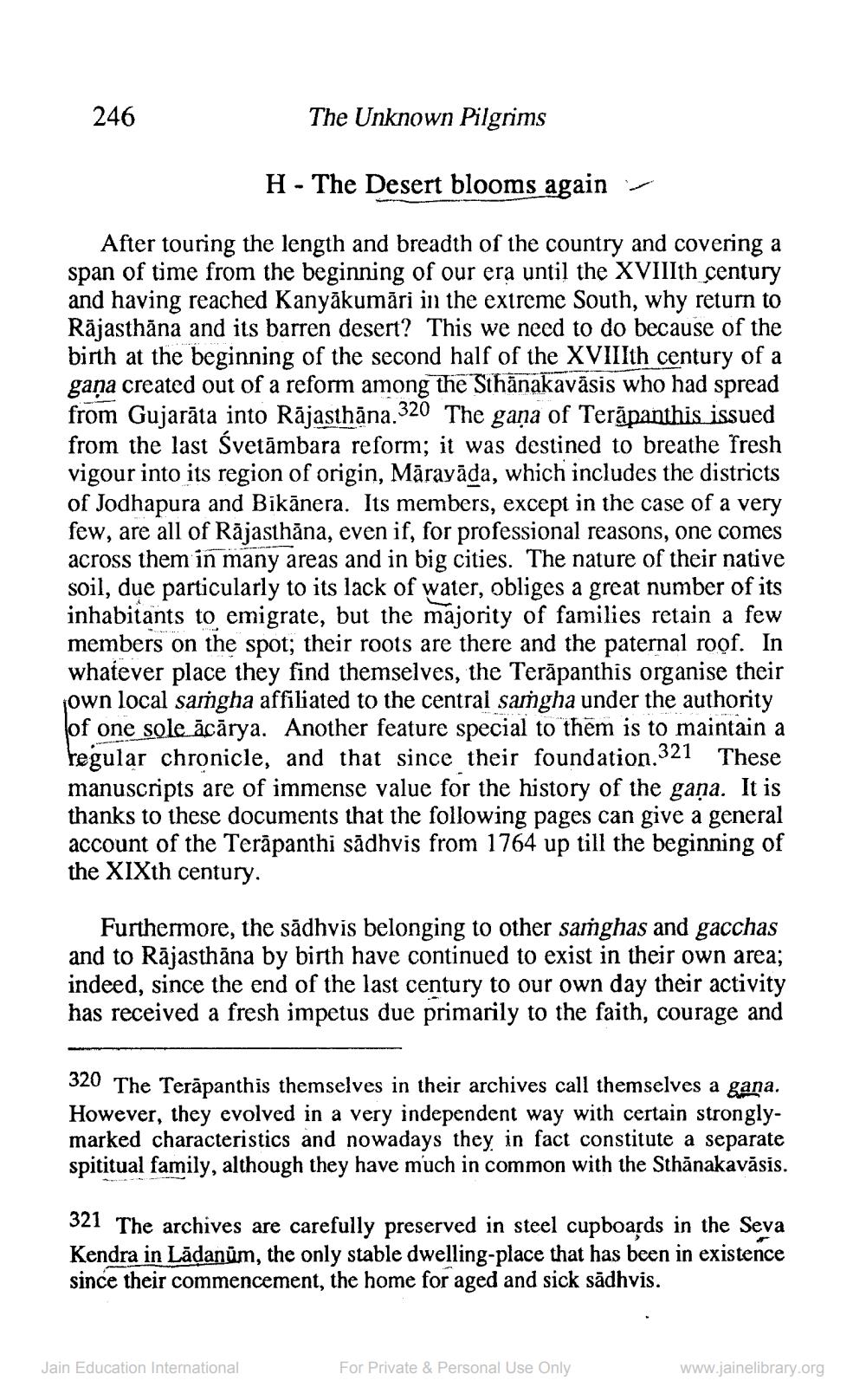________________
246
The Unknown Pilgrims
H - The Desert blooms again
After touring the length and breadth of the country and covering a span of time from the beginning of our era until the XVIIIth century and having reached Kanyākumāri in the extreme South, why return to Rajasthāna and its barren desert? This we need to do because of the birth at the beginning of the second half of the XVIIIth century of a gana created out of a reform among the Sthänakavāsis who had spread from Gujarāta into Rājasthāna.320 The gana of Terāpanthis issued from the last Svetāmbara reform; it was destined to breathe fresh vigour into its region of origin, Mārayāda, which includes the districts of Jodhapura and Bikānera. Its members, except in the case of a very few, are all of Rājasthāna, even if, for professional reasons, one comes across them in many areas and in big cities. The nature of their native soil, due particularly to its lack of water, obliges a great number of its inhabitants to emigrate, but the majority of families retain a few members
ers on the spot: their roots are there and the paternal roof. In whatever place they find themselves, the Terāpanthis organise their own local samgha affiliated to the central samgha under the authority of one sole ācārya. Another feature special to them is to maintain a regular chronicle, and that since their foundation.321 These manuscripts are of immense value for the history of the gaña. It is thanks to these documents that the following pages can give a general account of the Terāpanthi sādhvis from 1764 up till the beginning of the XIXth century.
Furthermore, the sădhvis belonging to other samghas and gacchas and to Rājasthāna by birth have continued to exist in their own area; indeed, since the end of the last century to our own day their activity has received a fresh impetus due primarily to the faith, courage and
320 The Terāpanthis themselves in their archives call themselves a gana. However, they evolved in a very independent way with certain stronglymarked characteristics and nowadays they in fact constitute a separate spititual family, although they have much in common with the Sthanakavāsis.
321 The archives are carefully preserved in steel cupboards in the Seva Kendra in Lādanum, the only stable dwelling-place that has been in existence since their commencement, the home for aged and sick sādhvis.
Jain Education International
For Private & Personal Use Only
www.jainelibrary.org




